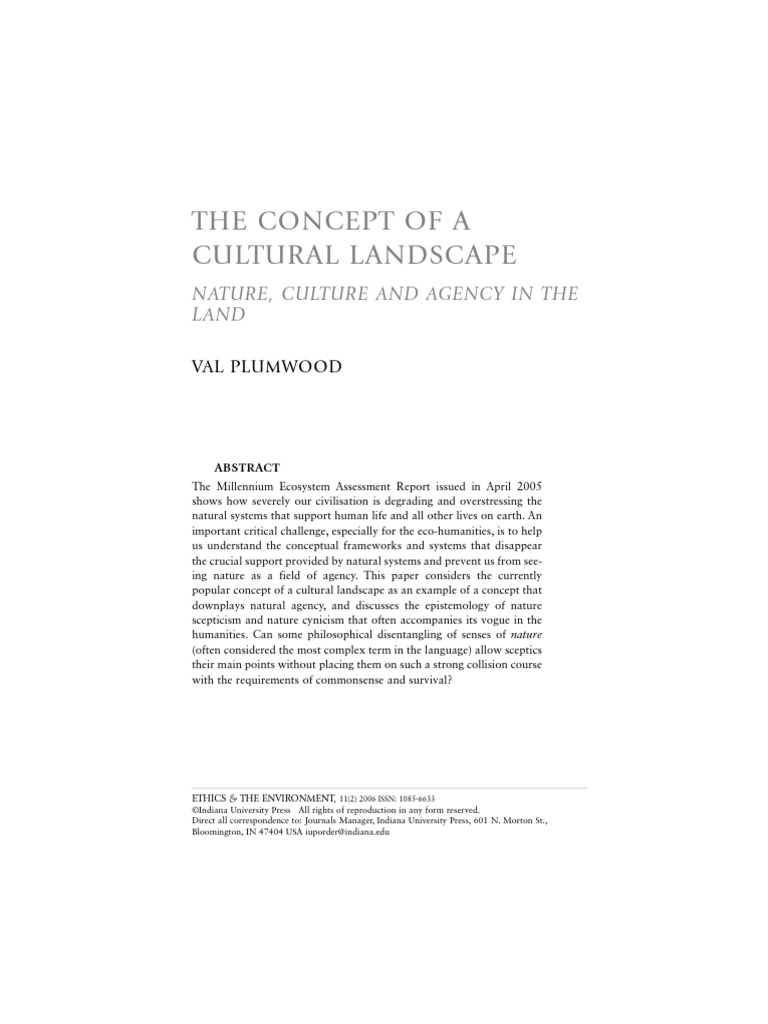Cultural landscapes represent the intersection of human activity and the natural environment, serving as vital testaments to our shared history and mutual cohabitation with diverse ecosystems. But what precisely constitutes a cultural landscape in the realm of human geography? This term evokes a confluence of ideas—how humans have profoundly shaped their physical surroundings while simultaneously allowing these environments to shape their identities.
To understand cultural landscapes, one must first recognize their multifaceted nature. At their core, cultural landscapes are the product of historical forces—land use, architectural styles, religious practices, and agricultural endeavors—blending seamlessly with the intrinsic characteristics of the land itself. As humans modified the environment for habitation, agriculture, and commerce, they inadvertently crafted a canvas of significance, one that encapsulates not merely physical attributes but also social values, ideologies, and traditions.
Moreover, the definition of cultural landscapes varies across contexts and disciplines. In human geography, it often refers to spaces that reveal the relationship between societal groups and their environments. These landscapes reflect changes over time, often offering insights into socio-economic trends, cultural practices, and environmental challenges. For instance, consider the terraced rice fields of Southeast Asia. Each level of this agricultural marvel is a cultural artifact, embodying centuries of labor, ingenuity, and adaptation.
Now, one might ponder: can a landscape ever be completely devoid of cultural significance? The answer lies in recognizing that every feature—be it a mountain, river, or urban development—holds meaning shaped by human experience. Geographic contexts, such as climate, topography, and available resources, influence cultural expressions, resulting in a vibrant tapestry of landscape types. From sacred sites to urban sprawls, each landscape narrates a distinct story.
One cannot overlook the profound impact of globalization on cultural landscapes. As the world becomes increasingly interconnected, local customs face pressures from global narratives. This has led to a homogenization of spaces, where unique cultural markers can be overshadowed by dominant global influences. For example, the proliferation of fast-food chains across urban centers worldwide diminishes the plurality of local culinary traditions, posing a significant challenge to cultural landmarks.
Challenges to Cultural Landscapes
Identifying and preserving cultural landscapes poses unique challenges, particularly in light of climate change. Rising sea levels, extreme weather patterns, and biodiversity loss threaten these environments, calling into question the viability of traditional practices. The question arises: how can communities reconcile the preservation of cultural landscapes with the necessity of adapting to the inexorable march of climate change? This challenge demands a delicate balance between heritage conservation and innovative practices that align with ecological resilience.
Preservation Efforts and Innovations
Preserving cultural landscapes necessitates concerted efforts from local communities, policymakers, and environmental organizations. Strategies may include protected area designations, limited development, and educational initiatives to foster awareness about the importance of these landscapes. For instance, designating UNESCO World Heritage sites provides a legal framework for the protection of locations deemed exemplary of cultural significance. Yet, this isn’t sufficient for sustainable preservation. Engaging communities in the stewardship of these landscapes fosters a sense of ownership and responsibility towards their continued existence.
Furthermore, innovation plays a pivotal role in preserving cultural landscapes. Researchers and practitioners are investigating adaptive methodologies that harmonize traditional practices with contemporary environmental needs. Techniques such as permaculture or agroecology not only maintain cultural significance but also enhance ecological health. The integration of modern technology—like geographic information systems (GIS)—allows for more effective mapping and management of cultural landscapes, ensuring that the memories they encapsulate can endure amidst shifting climatic realities.
The Intrinsic Value of Cultural Landscapes
Cultural landscapes offer intrinsic value that transcends aesthetic beauty or economic utility. They provide a sense of place, facilitating connections between individuals and their heritage. These landscapes form the backdrop for community gatherings, festivals, and rituals, thus fostering social cohesion and identity. Importantly, they can also serve as living laboratories for sustainable development, embodying practices that can be emulated in various contexts around the globe.
Understanding cultural landscapes thus encompasses recognizing their role as dynamic entities. They evolve alongside societal transformations, adapting to new cultural imprints while retaining elements of their historical lineage. This fluidity invites an ongoing dialogue about how we as a global community can appropriately honor our past while embracing a future grounded in sustainability.
In conclusion, the dance between culture and landscape is intricate, presenting both challenges and remarkable opportunities. As climate change looms large, the preservation of cultural landscapes becomes more imperative than ever. The interplay of tradition and innovation, local practices and global narratives prompts us to reconsider our relationship with the land. What will future generations inherit? How will they interpret the landscapes we leave behind? These questions remain essential in shaping our collective response to one of the most pressing issues of our time.
Ultimately, cultural landscapes are not merely remnants of human endeavor; they are living, breathing entities reflective of our shared history and aspirations. Balancing preservation with innovation is the key to ensuring that these landscapes continue to thrive, enriching our lives and the planet for generations to come.
